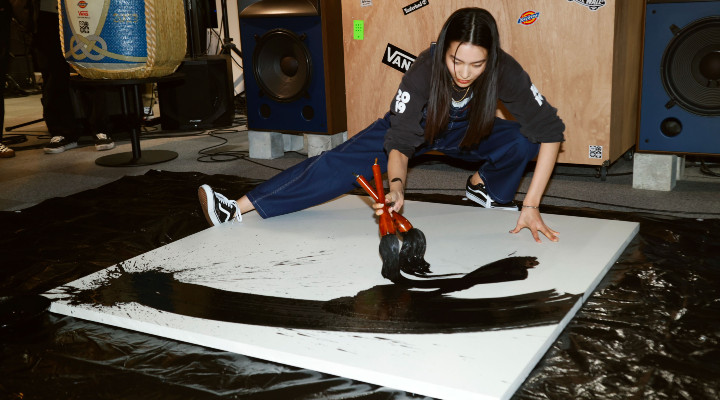VF Corporation is stepping up its fashion offering in the Japanese market with the recent launch of the Tokyo Design Collective (TDC) and a new regional office in Tokyo’s Harajuku district, which will be the new home of Dickies, Timberland and Vans in Japan. “2023 has been hugely exciting for us so far – as we firstly moved into our new office at the end of 2022, and then celebrated the launch of the Tokyo Design Collective and new regional office,” Mitch Whitaker, president of North Asi
Asia and Tokyo Design Collective, told Inside Retail.
The company has been developing the Tokyo Design Collective for well over a year, building out a talented design team and planning out the strategy with both regional and global brand leadership.
“In fact, the Tokyo Design Collective is already engaged in several new projects across VF’s brand portfolio so it’s really been a busy but exciting start,” he added.
The mission
Tokyo’s Harajuku district, which is internationally recognised as a centre for Japanese youth culture and fashion, is an integral part of the Tokyo Design Collective’s overall vision.
“The mission of the Tokyo Design Collective is to reinforce VF’s commitment to infusing aspirational Japanese product design and craftsmanship into its iconic global brands,” Whitaker said.
The company will use the centre to inspire new design concepts that not only connect with Japanese consumers, but translate and gain traction in other global markets as well.
“The Tokyo Design Collective will leverage the expertise of an in-house design team in addition to a network of freelance designers, artists, and Japanese brands to develop and promote new expressions of Japanese fashion,” he said.
Mitch Whitaker, president of North Asia and Tokyo Design Collective
Infusing craftsmanship
According to Whitaker, the vision for Tokyo Design Collective is to strategically tap into Japanese design, craftsmanship, and innovation to elevate aspiration and accelerate growth in Japan and all over the world.
“This will come from limited edition capsules, collaborations, as well as new designs that will go directly into our regional and global product offerings,” he noted.
Over time, he expects to see a healthy amount of Japanese designs contributing to its brands, some as early as the upcoming fall season.
The company has a global brand halo dubbed as “Japan for Japan for the rest of the world”, and through the Tokyo Design Collective, it will start to inject that additional design, material and innovation into its products.
“This is what we’ve internally referred to as bringing the ‘umami’ or Japanese flavour into our brands that will speak strongly to both our Japanese and global consumers,” he said.
The digital factor
These days, Whitaker observed that there is more digitally led product creation. As a result of this, the supply chain is increasingly reliant on digitalisation and the data that can be generated at every point in a product’s journey.
“Automation also offers profound potential to streamline production once all processes are traceable. Future success will require us to develop new digital platforms to create a hyper-digital supply chain,” he noted.
In order to become hyper digital, the company is looking to infuse digital technology throughout all aspects of its business to move faster, make smarter decisions, spark innovation and uniquely tailor consumers’ overall experiences.
VF Japan leadership take part in the celebratory “Kagami-Biraki” ceremony at the officiallaunch party. (Photo credit: VF Corporation)
A brave new world
The company is continuously refreshing its brand expression and DNA to create meaningful relationships with younger consumers by relating to the passions and struggles of this target audience.
It’s important that we are having two-way conversations. We also know that our consumers continue to evolve and have high expectations from brands, including a stronger interest in the environment and choosing an eco-friendly lifestyle,” he added.
Whitaker explained that VF Corp and its brands will continue to explore sustainable practices such as using regenerative agriculture, creating more sustainable packaging solutions and advancing its renewable energy efforts.
Moving forward
VF Corp places a strong emphasis on materials that can be repurposed, repaired or recycled in the design process. Moreover, the company has a “Design in Residence” program, which serves as an incubator for inspiration and talent locally and globally.
Whitaker hopes the Tokyo Design Collective will welcome both designers across VF’s global brands as well as external creative talents to live, work and co-create together.
According to him, the new space is a fully resourced design studio including sewing machines, heat transfer bonders, vacuum ironing tables, material library, and brand archives.
“It’s a great space for designers to spend months at a time in Tokyo and really integrate into this great design culture here to inspire and be inspired,” he concluded.

